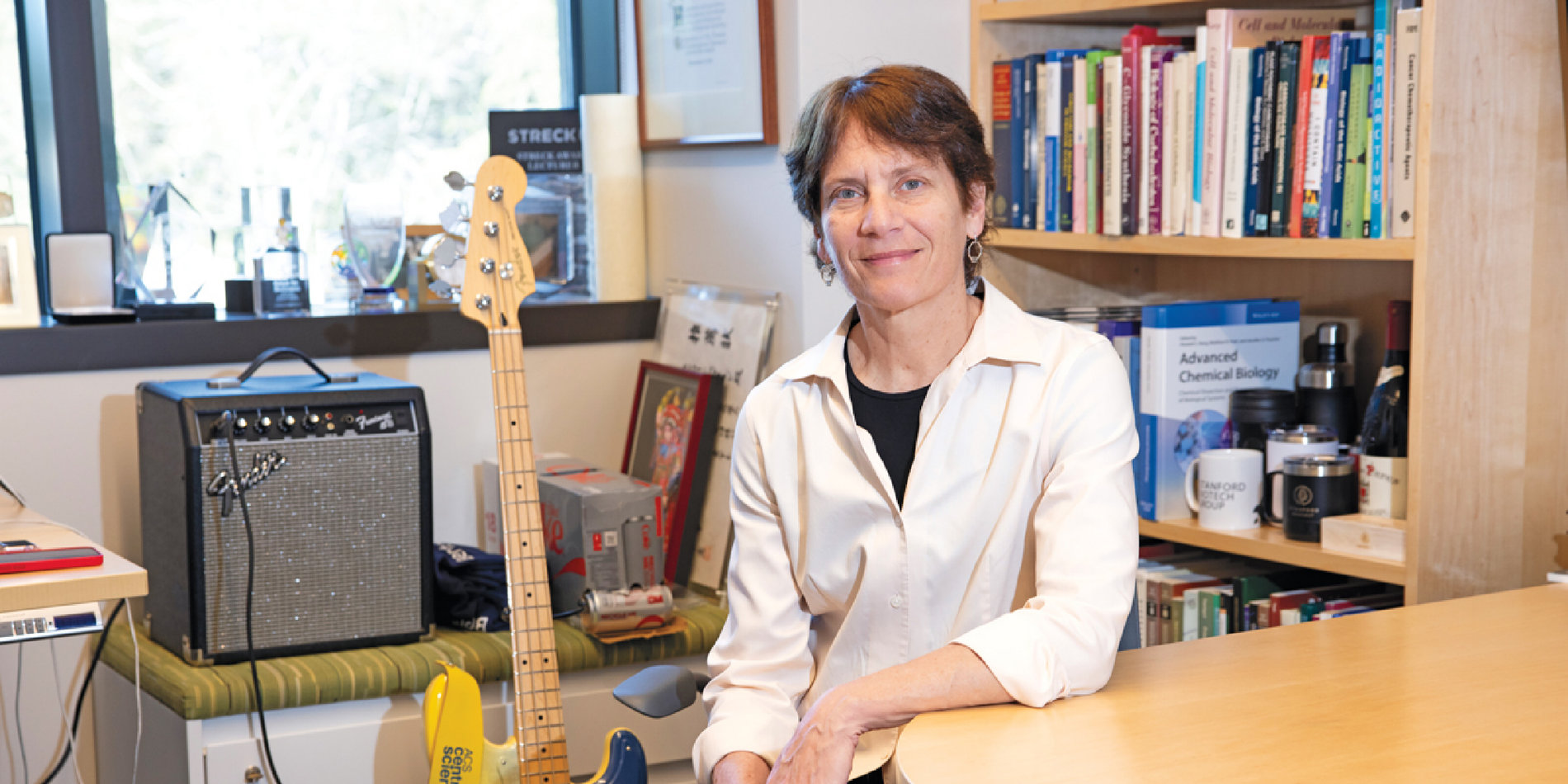ChEM-H researchers work toward new understanding of cancer camouflage
One of the fundamental challenges in treating cancer is how easily the disease hides from our immune systems. Now, Stanford ChEM-H researchers have taken a step toward understanding how cancer keeps itself out of sight and developed a new molecule that may help bring the disease into the light, where our own bodies can fight it.

The new study, published this week in Nature Cancer and led by Chemistry/Biology Interface graduate student Jacqueline Carozza, postdoctoral fellow Volker Böhnert, and ChEM-H Institute Scholar Lingyin Li, an assistant professor of biochemistry, is the story of two molecules. One molecule triggers the innate immune system, the body’s first line of defense against a variety of potential ailments. That molecule, which the team calls an immunotransmitter, is produced inside cells any time stray bits of genetic material are found floating around where they shouldn’t be – for example, after radiation therapy breaks up the innards of a cancer cell.
“It’s dangerous for cancer,” Li said of the transmitter molecule. If that transmitter escapes cancer cells, Li said, the cells’ cover would be blown and the immune system could attack. In the first part of the new study, the team argues that the transmitter does in fact escape, contrary to what some had thought.
Fortunately for cancer and unfortunately for patients, cancer cells have a defense: a second molecule that, Li showed in a 2014 paper, eats up the immunotransmitter as soon as it escapes cancer cells.
The question, then, was whether chemists could design a third molecule that stopped immunotransmitters from getting eaten up. For that, Carozza, Li and colleagues turned to Mark Smith, a senior research scientist with ChEM-H. Before coming to Stanford, Smith spent years in the pharmaceutical industry designing and developing drugs, and that is essentially what he does today as head of ChEM-H’s Medicinal Chemistry Knowledge Center.
Soon after Li emailed him, Smith showed up in her office wanting to help, and soon after that he had designed a molecule the team thought could disable cancer cells’ defenses. In tests, the team found that Smith’s molecule helped disable the defenses of several different cancer cell lines, and postdoc Volker Böhnert further showed that it could help shrink cancerous tumors in mice. And in some mice – about ten percent – a mix of radiation therapy and injections of the new molecule into tumors appears to have cured the mice of cancer altogether.
Although those are just the first results with a potential new drug, the researchers are optimistic that they could be on the path toward a better way to treat cancer.
The study, “Extracellular cGAMP is a cancer-cell-produced immunotransmitter involved in radiation-induced anticancer immunity,” was published in an earlier form in the BioRxiv, along with a companion paper which describes how a transporter molecule helps the immunotransmitter get into immune cells.



